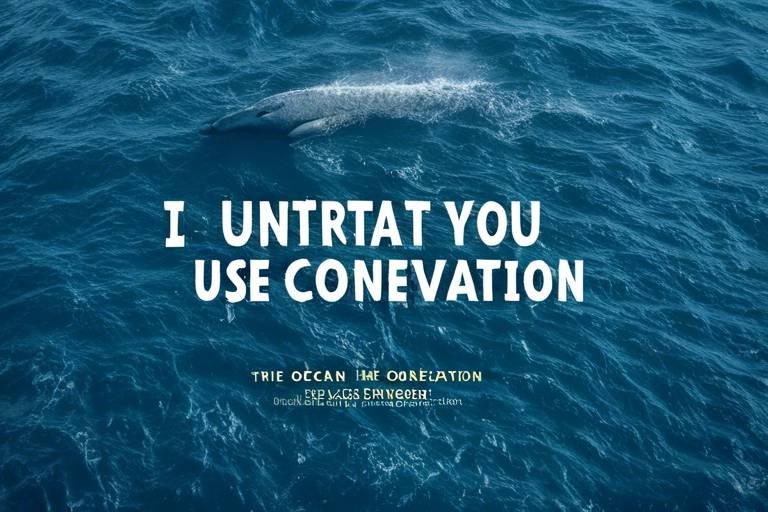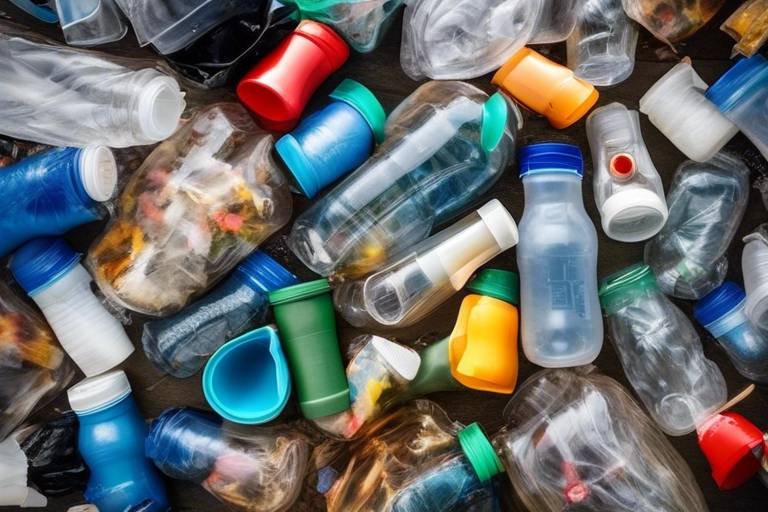How to Reduce Food Packaging Waste
Reducing food packaging waste is a crucial step towards a more sustainable and eco-friendly future. By making conscious choices and adopting environmentally friendly practices, individuals can significantly minimize their impact on the environment. One effective strategy is to opt for eco-friendly packaging materials that are biodegradable, compostable, or recyclable. These options help reduce waste generation and promote a circular economy.
Another practical approach is to embrace reusable containers for various purposes such as storing leftovers, meal prepping, and packing lunches. Investing in durable containers that can be used multiple times not only reduces the need for disposable packaging but also saves money in the long run. By choosing quality over quantity, individuals can contribute to waste reduction efforts.
Moreover, upcycling packaging materials presents a creative and innovative way to repurpose items that would otherwise end up in the trash. Glass jars can be transformed into decorative candle holders, while cardboard boxes can be used for gift wrapping or organizing household items. By giving packaging materials a second life, individuals can add a touch of creativity to their daily routines while reducing waste.
Supporting sustainable brands is another impactful way to promote eco-friendly packaging practices. Companies that prioritize sustainability and environmental stewardship often use materials that are responsibly sourced and recyclable. By choosing products from such brands, consumers can show their support for ethical business practices and encourage others to follow suit.
Additionally, participating in recycling programs and properly disposing of packaging materials like cardboard, paper, glass, and metal can help divert waste from landfills and promote resource conservation. By following local recycling guidelines and educating oneself on proper sorting techniques, individuals can maximize the effectiveness of recycling efforts in their communities.

Choose Eco-Friendly Packaging
This article explores practical strategies and tips to minimize food packaging waste, including eco-friendly packaging options, bulk buying tips, creative upcycling ideas, and ways to advocate for sustainable packaging practices.
When it comes to reducing food packaging waste, opting for eco-friendly packaging is a crucial step. By switching to biodegradable, compostable, or recyclable packaging materials, you can significantly decrease your environmental impact and contribute to waste reduction. Look for products that come in minimal packaging or packaging made from recycled materials to further support sustainability efforts.

Opt for Bulk Buying
When it comes to reducing food packaging waste, opting for bulk buying can make a significant impact. By purchasing food items in larger quantities, you can minimize the amount of packaging waste generated. One practical tip is to bring your reusable containers or bags when shopping at bulk stores or farmers' markets. This way, you can avoid single-use packaging and contribute to a more sustainable shopping experience.

Embrace Reusable Containers
This article explores practical strategies and tips to minimize food packaging waste, including eco-friendly packaging options, bulk buying tips, creative upcycling ideas, and ways to advocate for sustainable packaging practices.
When it comes to reducing food packaging waste, one of the most impactful steps you can take is to . By using durable containers that can be used multiple times, you not only cut down on single-use packaging waste but also save money in the long run. Investing in high-quality containers that are easy to clean and maintain is a simple yet effective way to make a positive impact on the environment.

Upcycle Packaging Materials
When it comes to reducing food packaging waste, one creative and eco-friendly approach is to upcycle packaging materials. Upcycling involves repurposing used packaging items into new and useful products, giving them a second life instead of throwing them away. This not only helps minimize waste but also promotes creativity and resourcefulness.
One popular way to upcycle packaging materials is to transform glass jars into versatile containers for storing spices, grains, or homemade sauces. These jars can also be used as candle holders, vases, or even mini terrariums, adding a touch of uniqueness to your home decor. By upcycling glass jars, you not only reduce waste but also contribute to a more sustainable lifestyle.
Cardboard boxes, often used for packaging various food items, can be repurposed into practical storage solutions. By decorating and stacking cardboard boxes, you can create custom storage bins for organizing pantry items, kitchen supplies, or children's toys. This upcycling idea not only reduces the need for additional storage containers but also adds a personalized touch to your living space.
Another creative way to upcycle packaging materials is to use paper-based packaging, such as cereal boxes or paper bags, for DIY arts and crafts projects. These materials can be transformed into gift tags, bookmarks, or even unique wall art pieces. By upcycling paper-based packaging, you can unleash your artistic side while reducing waste and promoting sustainability.
Upcycling food packaging materials not only offers a fun and creative outlet but also contributes to a greener environment by diverting items from the landfill. By exploring different upcycling ideas and incorporating them into your daily life, you can play a part in reducing food packaging waste and fostering a more sustainable future.

Support Sustainable Brands
When it comes to reducing food packaging waste, one impactful way to make a difference is by supporting sustainable brands. By choosing products from companies that prioritize eco-friendly packaging practices and environmental responsibility, consumers can contribute to a more sustainable future. Sustainable brands go beyond just the product itself; they consider the entire lifecycle of the packaging, from sourcing materials to disposal.
Supporting sustainable brands means looking for certifications like FSC (Forest Stewardship Council), Rainforest Alliance, or B Corp. These certifications indicate that the company follows strict environmental standards and ethical practices in their packaging processes. By purchasing from these brands, consumers can vote with their wallets for more sustainable packaging solutions.
Additionally, sustainable brands often use innovative packaging materials that are biodegradable, compostable, or recyclable. These materials help reduce the environmental impact of packaging waste and promote a circular economy where resources are reused and recycled efficiently. By supporting these brands, consumers can encourage the adoption of more sustainable packaging practices across industries.

Reduce Single-Use Plastics
Single-use plastics have become a pervasive environmental issue, contributing significantly to pollution and waste accumulation. By reducing our reliance on these disposable items, we can make a positive impact on the planet. One effective way to minimize single-use plastics is to opt for reusable alternatives that are both eco-friendly and durable. Stainless steel straws, for example, can replace their plastic counterparts, offering a sustainable solution for enjoying beverages without contributing to plastic waste. Similarly, beeswax wraps provide a reusable and biodegradable alternative to plastic cling film, ideal for wrapping food items and reducing the need for disposable packaging.
Another strategy to reduce single-use plastics is to embrace silicone food bags, which offer a versatile and long-lasting option for storing snacks, sandwiches, and other food items. These reusable bags not only help cut down on plastic waste but also provide a convenient and practical solution for food storage. Additionally, bamboo cutlery sets are an excellent alternative to disposable plastic utensils, offering a sustainable choice for on-the-go meals or picnics. By incorporating these reusable products into our daily routines, we can significantly decrease our reliance on single-use plastics and contribute to a cleaner environment.

Compost Food Scraps
Composting food scraps is a sustainable practice that can significantly reduce waste and benefit the environment. By disposing of food scraps and compostable packaging in a compost bin, you can divert organic waste from landfills and contribute to the production of nutrient-rich soil for gardening purposes. Composting not only helps in reducing methane emissions, a potent greenhouse gas produced in landfills, but also promotes the circular economy by turning waste into a valuable resource.

Spread Awareness
When it comes to reducing food packaging waste, spreading awareness is key to creating a positive impact on the environment. By educating others about the importance of sustainable packaging practices, you can inspire change and encourage more people to adopt eco-friendly habits. One effective way to raise awareness is by organizing workshops or seminars in your community, where you can share tips and information on how to minimize packaging waste. Additionally, engaging with local schools, businesses, and organizations to promote eco-friendly initiatives can help amplify the message and reach a wider audience.

Participate in Recycling Programs
Participating in recycling programs is a crucial step towards reducing food packaging waste and promoting environmental sustainability. By recycling packaging materials such as cardboard, paper, glass, and metal, you can help conserve resources, reduce energy consumption, and minimize landfill waste. Recycling plays a significant role in the circular economy, where materials are reused and repurposed instead of being disposed of as waste.
When you participate in recycling programs, it is essential to follow local guidelines for sorting and disposing of recyclable materials. Properly separating different types of packaging materials ensures that they can be processed efficiently and turned into new products. By supporting recycling initiatives in your community, you contribute to the overall effort to reduce the environmental impact of food packaging waste.
Recycling not only benefits the environment but also helps create a more sustainable future for generations to come. By actively engaging in recycling programs and advocating for responsible waste management practices, you can make a positive impact on the planet and inspire others to do the same. Together, we can work towards a cleaner, greener world by embracing recycling as a fundamental part of our daily lives.
Frequently Asked Questions
- How can I reduce food packaging waste at home?
To reduce food packaging waste at home, you can start by choosing eco-friendly packaging materials, opting for bulk buying to minimize single-use packaging, embracing reusable containers for storage and meal prep, and supporting sustainable brands that prioritize eco-friendly practices.
- What are some creative ways to upcycle food packaging materials?
You can upcycle food packaging materials by turning glass jars into storage containers or candle holders, using cardboard boxes for organizing items or gift wrapping, transforming plastic containers into plant pots, or repurposing tin cans for arts and crafts projects.
- How can I encourage others to reduce food packaging waste?
You can spread awareness about the importance of reducing food packaging waste by organizing workshops, sharing informative resources on sustainable practices, advocating for policy changes to promote eco-friendly packaging solutions, and leading by example in your community.



















